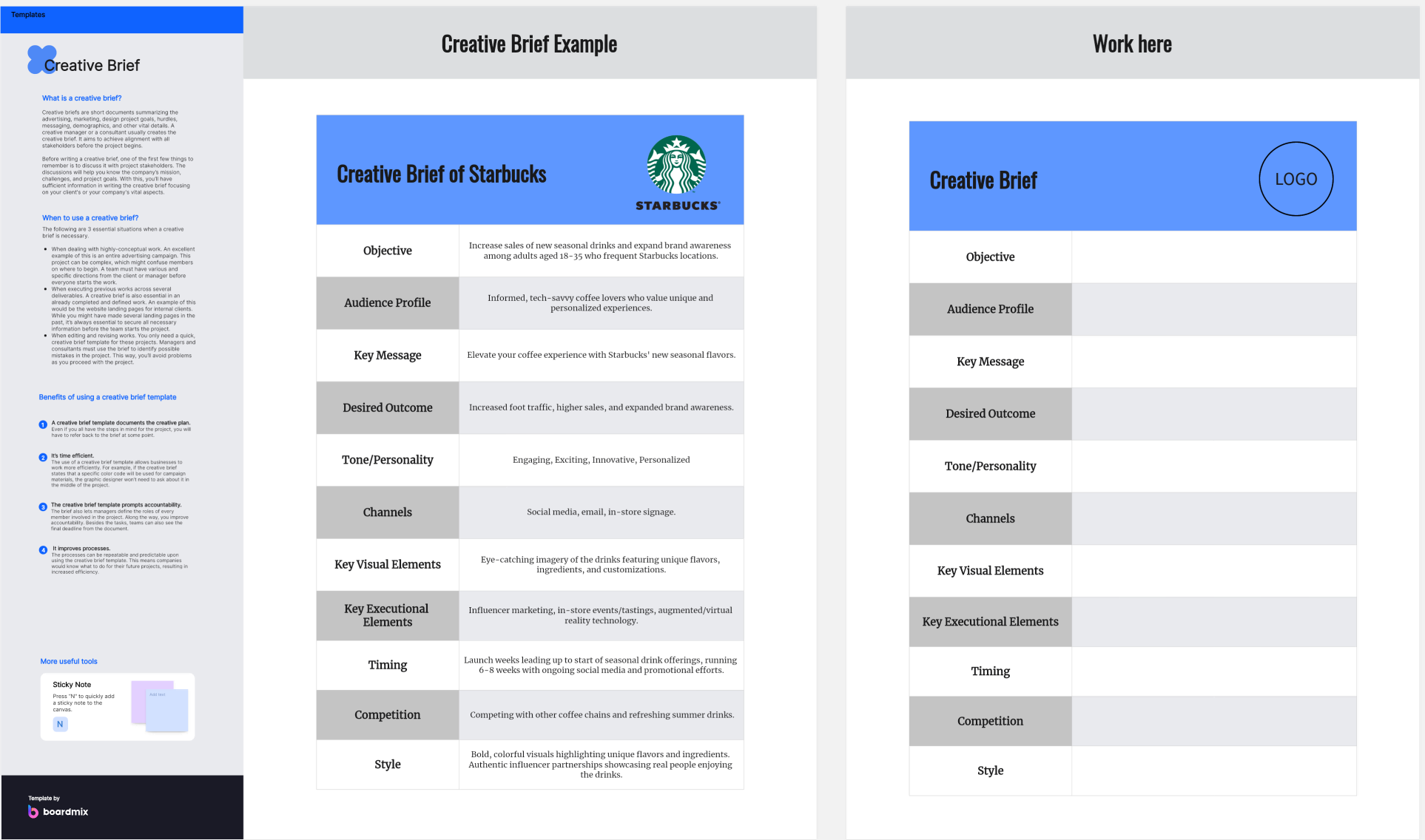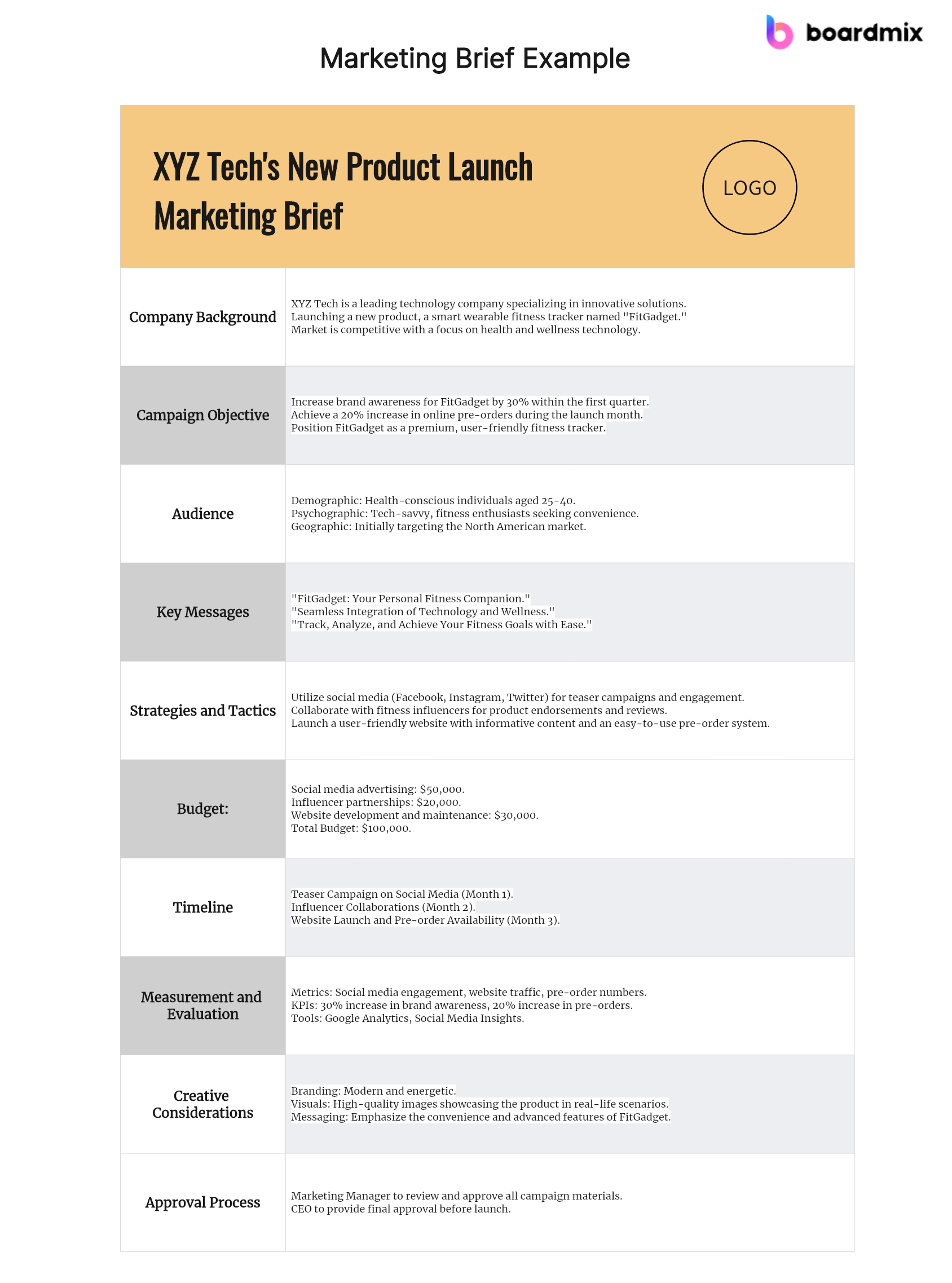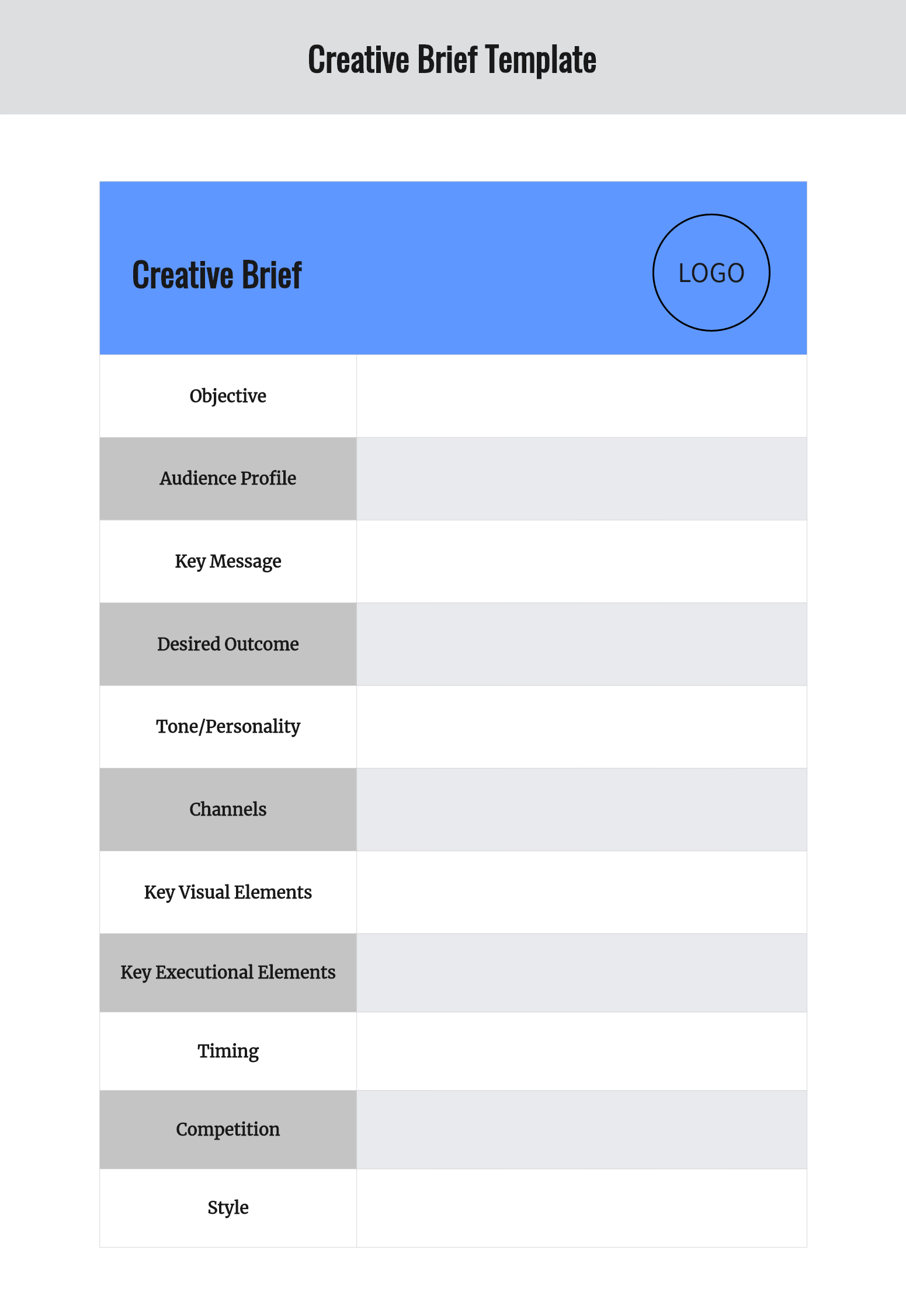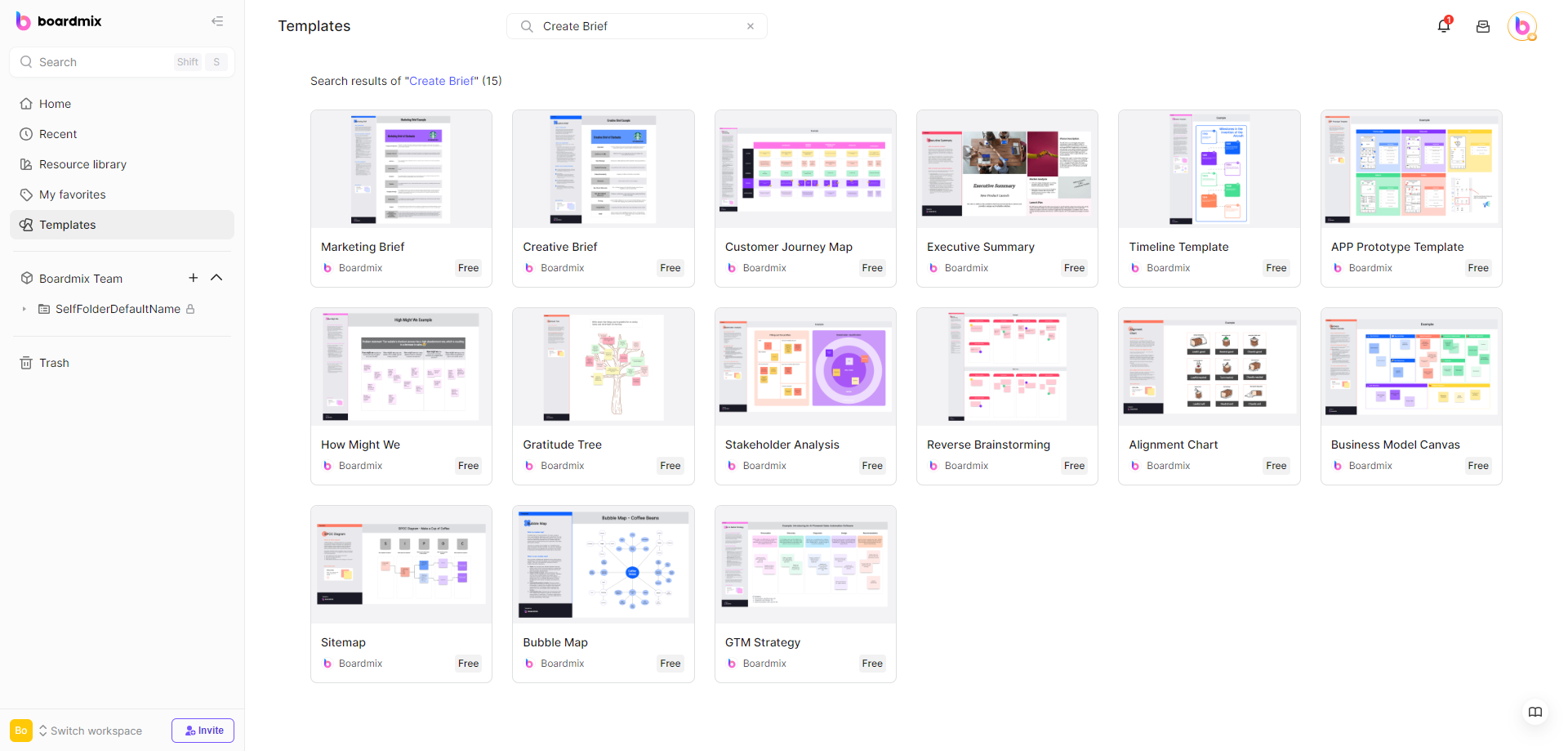Venturing into the realm of creative projects, you may find yourself in need of a compass - a guide that aligns your team's creative energy towards a common goal. Welcome to the world of Creative Briefs, your ultimate navigation tool, akin to a well-drawn map guiding you through the wilderness of ideas toward your destination of successful project execution. But this isn't just about giving directions. It's about understanding how to craft a Creative Brief that effectively communicates your project's objectives, audience, and unique selling points.
So, what is a Creative Brief? How do you write one that ensures clarity and alignment within your team? And most importantly, how can a well-crafted Creative Brief steer your creative projects towards success?
Let's embark on this journey together, navigating through the landscape of Creative Briefs and their role in driving successful creative projects. Ready to chart your course toward effective project execution? Let's get started!

What is a Creative Brief?
A creative brief is a document that outlines the objectives, goals, and requirements of a creative project. It serves as a guide for the creative team, providing them with a clear understanding of what needs to be accomplished and the direction they should take.
How to Write a Creative Brief?
To write a creative brief, follow these steps:
- Define the Project: Start by providing an overview of the project. Include details such as the project name, client name, project description, and any specific deliverables or outcomes that are expected.
- Set Objectives: Clearly define the objectives of the project. What are you trying to achieve? Are you looking to increase brand awareness, drive sales, or educate the target audience? Make sure your objectives are specific, measurable, achievable, relevant, and time-bound (SMART).
- Identify the Target Audience: Who is the target audience for this project? Describe their demographics, interests, behaviors, and needs. Understanding your target audience will help the creative team tailor their messaging and design to engage them effectively.
- Determine Key Messages: Identify the key messages that need to be conveyed through the creative project. These messages should align with the brand's values and resonate with the target audience. Keep the messages concise, clear, and compelling.
- Establish Tone and Style: Define the tone and style that should be reflected in the creative work. Consider the brand's personality and how it should be conveyed through the visuals, language, and overall design. Provide examples or references to help the creative team understand the desired tone and style.
- Specify Deliverables: Clearly state the deliverables that are expected from the creative team. This could include items such as logos, website designs, social media graphics, or print materials. Be specific about the formats, sizes, and quantities required.
- Set Timelines and Budget: Establish a timeline for the project, including key milestones and deadlines. Make sure the creative team has a clear understanding of the project's time constraints. Additionally, provide information on the budget allocated for the project to help guide decision-making.
- Provide Additional Information: Include any additional information that may be relevant to the project. This could include brand guidelines, competitor analysis, market research, or any other insights that may influence the creative direction.
Remember, a well-written creative brief is essential for effective communication between the client and the creative team. It helps ensure everyone is aligned on expectations and provides a foundation for creating impactful and successful creative work.
Boardmix Online Whiteboard Features for Creating Creative Brief
Boardmix Online Whiteboard offers a variety of features that make it an excellent tool for creating a creative brief. Here are some key features.
- Real-time collaboration: Boardmix allows multiple team members to collaborate on the creative brief in real-time. This means that everyone can contribute their ideas, make edits, and provide feedback simultaneously, promoting effective communication and collaboration.
- Visual elements: With Boardmix, you can easily add visual elements to your creative brief, such as images, shapes, and icons. This helps in presenting your ideas and concepts visually, making the brief more engaging and impactful.
- Text tools: Boardmix provides various text tools that allow you to add headings, paragraphs, bullet points, and other text elements to your creative brief. This helps in organizing your content and making it easier to read and understand.
- Templates: Boardmix offers pre-built templates specifically designed for creating creative briefs. These templates provide a structured format that includes sections for project overview, deliverables, branding guidelines, key messages, and more. Using these templates can save you time and ensure that you include all the necessary information in your brief.
- File attachments: Boardmix allows you to attach files to your creative brief. This is useful for including additional reference materials, examples, or documents that are relevant to the project. Team members can easily access these attachments within the whiteboard, eliminating the need for separate file sharing.
- Commenting and feedback: Boardmix enables you to leave comments and provide feedback directly on the whiteboard. This fosters better communication and collaboration among team members, ensuring that everyone's opinions and ideas are considered.
- Easy sharing and access: Once you have completed your creative brief, you can easily share it with your team members or clients. Boardmix provides a shareable link that allows others to access the whiteboard and view the brief. This eliminates the need for sending large files or printing physical copies.

By utilizing these features of Boardmix Online Whiteboard, you can create a comprehensive and visually appealing creative brief that effectively communicates your project requirements to your team members and clients.

Why use Boardmix to write a Creative Brief?
There are several reasons why you should use Boardmix to write a creative brief:
- Organization: Boardmix provides a centralized platform where you can store and manage all your creative briefs. This makes it easy to access and reference previous briefs, ensuring consistency across projects.
- Collaboration: Boardmix allows multiple team members to collaborate on the creative brief in real-time. This fosters better communication and ensures everyone is aligned on the project objectives and requirements.
- Templates: Boardmix offers pre-built templates for creative briefs, making it easier and quicker to create a brief. These templates are customizable, allowing you to tailor them to your specific needs.
- Workflow Management: Boardmix helps streamline the creative brief process by providing task management and workflow automation features. This ensures that each step of the brief creation process is completed efficiently and on time.
- Integration: Boardmix integrates with other popular creative tools and platforms, such as design software and project management tools. This seamless integration eliminates the need for manual data transfer and improves overall productivity.
By using Boardmix, you can create well-structured and comprehensive creative briefs that effectively communicate your project requirements to the creative team.

How to create a Creative Brief in Boardmix?
To create a creative brief in Boardmix, follow these steps:

- Log in to your Boardmix account and navigate to the project where you want to create the creative brief.
- Search for the "Create Brief" in the Template session to start a new brief.
- Start by providing an overview of the project. Include important details such as the project name, client name, project description, and any specific deliverables or outcomes expected.
- Clearly define the objectives of the project. What are you trying to achieve? Is it increasing brand awareness, driving sales, or educating the target audience? Make sure your objectives are specific, measurable, achievable, relevant, and time-bound (SMART).
- Identify the target audience for this project. Describe their demographics, interests, behaviors, and needs. Understanding your target audience will help the creative team tailor their messaging and design to effectively engage them.
- Identify the key messages that need to be conveyed through the creative project. These messages should align with the brand's values and resonate with the target audience. Keep the messages concise, clear, and compelling.
- Define the tone and style that should be reflected in the creative work. Consider the brand's personality and how it should be conveyed through visuals, language, and overall design. Provide examples or references to help the creative team understand the desired tone and style.
- Clearly state the deliverables expected from the creative team. This could include items such as logos, website designs, social media graphics, or print materials. Be specific about the formats, sizes, and quantities required.
- Establish a timeline for the project, including key milestones and deadlines. Make sure the creative team has a clear understanding of the project's time constraints.
- Provide information on the budget allocated for the project to guide decision-making.
- Include any additional information that may be relevant to the project. This could include brand guidelines, competitor analysis, market research, or any other insights that may influence the creative direction.
- Review the brief for clarity and completeness before submitting it to the creative team.








